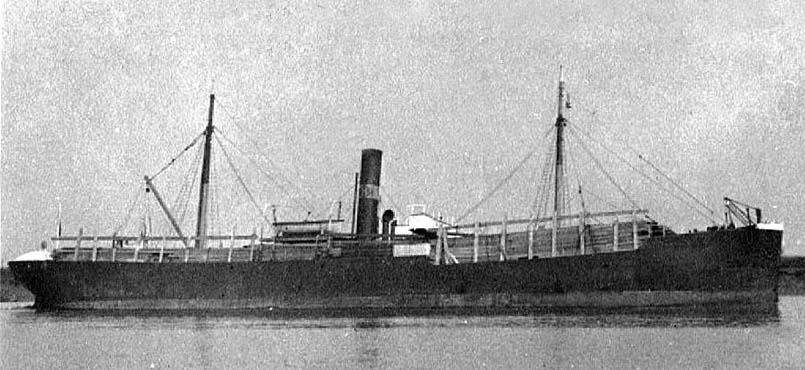The "Timaru Herald", New Zealand, 12 April 1883
TERRIBLE DISASTERS IN THE BRISTOL CHANNEL.
LOSS OF SIX LIFEBOATMEN AND A VESSEL'S CREW.
(Home paper, February 17th.)
SWANSEA, Saturday night. - The Glamorganshire coast was a scene of two terrible disasters to-day, whereby at least twenty lives have been lost.
A fresh gale from the south-west arose and blew with great violence, causing a very high sea to lash the northern coast of the British Channel. The German barque Admiral Prince Albert drove on the rocks near the Mumbles. The lifeboat from Mumbles, which went out to her assistance, was also driven on the rocks and stove in, four of her crew being drowned. The crew of the German vessel managed to get ashore safely, except one man, who was drowned. The vessel is a total wreck. The men drowned are William Rogers, William Mack, John Jenkins and William Jenkins. The captain of the lifeboat and another man were badly injured.
A still more disastrous wreck occured at Port Eynon Bay, about 15 miles from Swansea, the steamer Agnes Jack having been wrecked and all her crew (numbering about b15) engulfed within sight of land, and in spite of every effort made to save them. The steamer left Cagliari, in Sardinia, on the 12th January, with a cargo of lead ore, consigned to Swansea, but to be unshipped at Llanelly. The vessel experienced stormy weather in coming up Channel, consequently the captain made for the Mumbles Roads for shelter, and lay there till early on Saturday morning, when he left. The vessel was afterwards seen going dead slow, and was subsequently sighted by Lloyd's surveyor at Port Eynon in a distressed state. By-and-bye he could discern nothing of her, with the exception of one mast, clinging to which were about ten of the crew. Efforts were at once made to render the men help by means of the rocket apparatus, but the line failed to reach the vessel, and in the meantime the exhausted crew were seen dropping one by one from the only yardarm left into the terrible sea which was raging, until finally the mast itself snapped in twain. This was the last seen of either crew or vessel until dead low water, when part of the deck was visible. The vessel was then lying on the rocks about 100 yards from land. The log-book was afterwards picked up, together with other articles, including some of the captain's apparel, and it is supposed the captain had thrown off his clothes in order to try and swim ashore. One of the steamer's lifeboats was also discovered on the rocks a short distance from where the wreck is lying.
The log-book gives the following particulars of the crew: - John Williams, aged 40, Liverpool, cook; James Owen, 40, Tewport, Pembroke, steward; David Willie, 26, Pembrey, donkeyman; George Cook, 56, Belfast, fireman; John Finn, 57, Sligo, fireman; Augustus Hall, 43, Boston, able seaman; Richard Roberts, 35, Nevin, able seaman; W. C. Watkins, 25, Maidstone, chief mate; William Morrison, 32, chief engineer; John Donn, 29, Talbach, second engineer; James Jones, 26, Cardigan, fireman; Wm. Smith, 45, Finland, able seaman; William Whalen, 30, Finland, boatswain; Giovanni George, Trieste, able seaman.
The master of the wrecked vessel was John Jones, 28, of Neath, and her owner is Mr. John Bacon, of Liverpool.
The wife of the master is at present living at St. Thomas's, Swansea, and but for sudden indisposition she and her children would have accompanied her husband on this fatal voyage.
SWANSEA, Sunday night. - There are still two others of the crew of the lifeboat missing -viz., William Rogers and William McNamara, and only the coat of the latter has so far been recovered. The body of the carpenter of the barque was found on the east side of the Mumbles Lighthouse lock, underneath the landing-stage. It seems that there were four of the Jenkins family in the lifeboat beside their father, and McNamara is a son-in-law of Perkins. The eldest son, John, had his neck broken, and his brother William was battered about the head, so that these two men were not drowned, but died from the effects of the injuries they sustained. The two other sons were afterwards found in Bob's Cave. They were seen hanging to the rocks for two hours, and the youngest, George, who is severely cut about the head and has one of his legs broken in three places, is not expected to survive.
It is reported that eight of the crew of the Agnes Jack have been washed ashore in Orwich Bay. |







